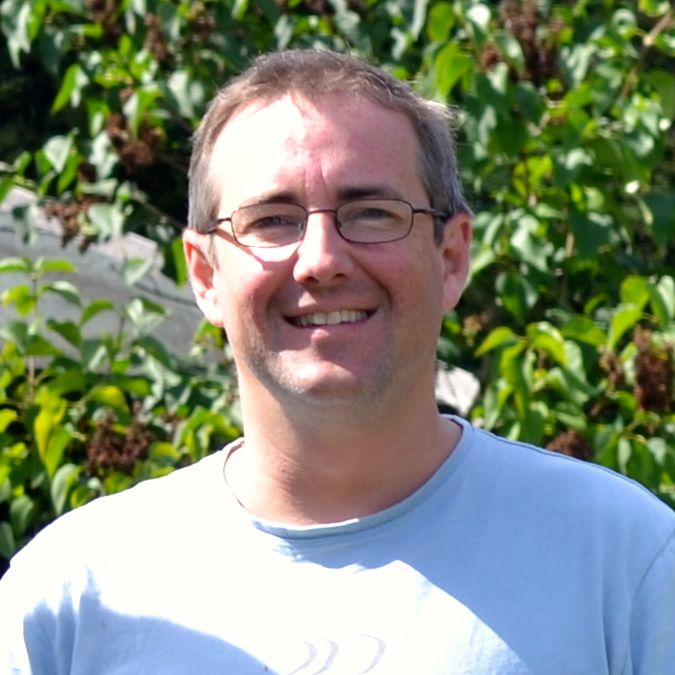Cambridge 7th to 9th September

Presenting Author:
Matt Tucker
<matt.tucker@stfc.ac.uk >
article posted 13 Mar 2015
Matt Tucker
Dr Matt Tucker has been an instrument scientist in the Crystallography Group at the ISIS
Facility, Rutherford Appleton Laboratory since 2005. Since 2013, he has also had a joint
appointment at the Diamond Light Source. At ISIS he is an instrument scientist on the high
flux medium resolution POLARIS diffractometer, which is a world-class instrument for
total scattering measurements. At Diamond he is helping to design, build and ultimately
run Europe's first dedicated Xray-PDF beamline. Previously, he was a PDRA for 6 years
in the Department of Earth Science at the University of Cambridge after obtaining his PhD
from the University of Kent at Canterbury. Matt's research interests focus on using and
developing total scattering techniques for the study of disordered crystalline materials
and he is the co-author of over 100 refereed publications. Research highlights include
studies of negative thermal expansion, pressure induced amorphisation and colossal
thermal expansion. He has successfully led the development of a Reverse Monte Carlo
program (RMCProfile) specifically for the analysis of total scattering data of polycrystalline
materials (with Prof. David Keen, Prof. Martin Dove, Dr Igor Levin and several other
contributors). This program suite is freely available for download at www.rmcprofile.org.
Matt is currently the Chairman of the Physical Crystallography Group (PCG) of the
British Crystallography Association (BCA) and the Structural Condensed Matter Group
(SCMP) of the Institute of Physics (IoP) (www.pcg-scmp.org).

XPDF and a step towards Complex Modelling
Matt Tucker
ISIS Facility & Diamond Light Source, Rutherford Appleton Laboratory,
Harwell Science and Innovation Campus, Didcot,
Oxfordshire OX11 0QX, U.K.
 XPDF, a new beamline at the Diamond Light Source, will be Europe's first dedicated
Pair Distribution Function (PDF) instrument. Using the x-ray PDF technique, also know
as x-ray total scattering, to study crystalline materials has been growing in popularity
over the past decade. However, the technique of course was originally perfected and
used to study the atomic structure of amorphous materials. So this means the new
XPDF beamline will be extremely useful for the study of glasses and I will give an
update on the status of the project and an overview of it capabilities.
XPDF, a new beamline at the Diamond Light Source, will be Europe's first dedicated
Pair Distribution Function (PDF) instrument. Using the x-ray PDF technique, also know
as x-ray total scattering, to study crystalline materials has been growing in popularity
over the past decade. However, the technique of course was originally perfected and
used to study the atomic structure of amorphous materials. So this means the new
XPDF beamline will be extremely useful for the study of glasses and I will give an
update on the status of the project and an overview of it capabilities.
 To gain the most useful information from total scattering data it is often necessary to
produce atomistic model with computation methods. One such method is reverse
Monte Carlo (RMC)[1], here a large box of atoms is constructed with the correct
composition and density. Then atom chosen at random, are moved by a random
amount until the calculated total scattering matches the experimental data. This
comparison back to the data rather than to an empirical potential is what make
this reverse rather than classical Monte Carlo. The resulting atomistic configuration
can then be analysed to provide a more detailed understand of the environment
around the various atom types.
To gain the most useful information from total scattering data it is often necessary to
produce atomistic model with computation methods. One such method is reverse
Monte Carlo (RMC)[1], here a large box of atoms is constructed with the correct
composition and density. Then atom chosen at random, are moved by a random
amount until the calculated total scattering matches the experimental data. This
comparison back to the data rather than to an empirical potential is what make
this reverse rather than classical Monte Carlo. The resulting atomistic configuration
can then be analysed to provide a more detailed understand of the environment
around the various atom types.
 As with the experimental technique we have been developing RMC methods
for the study of crystalline materials over the past decade [2]. However, since
they are built on the methods originally developed for amorphous materials,
the new development can equally be applied to amorphous systems. I will
give several examples of how the new methods have been used to study
phenomena such as solid-state amorphisation and how they are moving us
closer to a complex modeling regime [3].
As with the experimental technique we have been developing RMC methods
for the study of crystalline materials over the past decade [2]. However, since
they are built on the methods originally developed for amorphous materials,
the new development can equally be applied to amorphous systems. I will
give several examples of how the new methods have been used to study
phenomena such as solid-state amorphisation and how they are moving us
closer to a complex modeling regime [3].
References:
1. R. McGreevy, L. Pusztai, Mol. Simul., 1988, 1, 359
2. RMCProfile: reverse Monte Carlo for polycrystalline materials M G Tucker, D A Keen, M T Dove, A L Goodwin, Q Hui J. Phys.-Condes. Matter 19 335218 (2007) - also more information and the program available at www.rmcprofile.org
3. S. Billinge, I. Levin, Science, 2007, 316, 561-565
